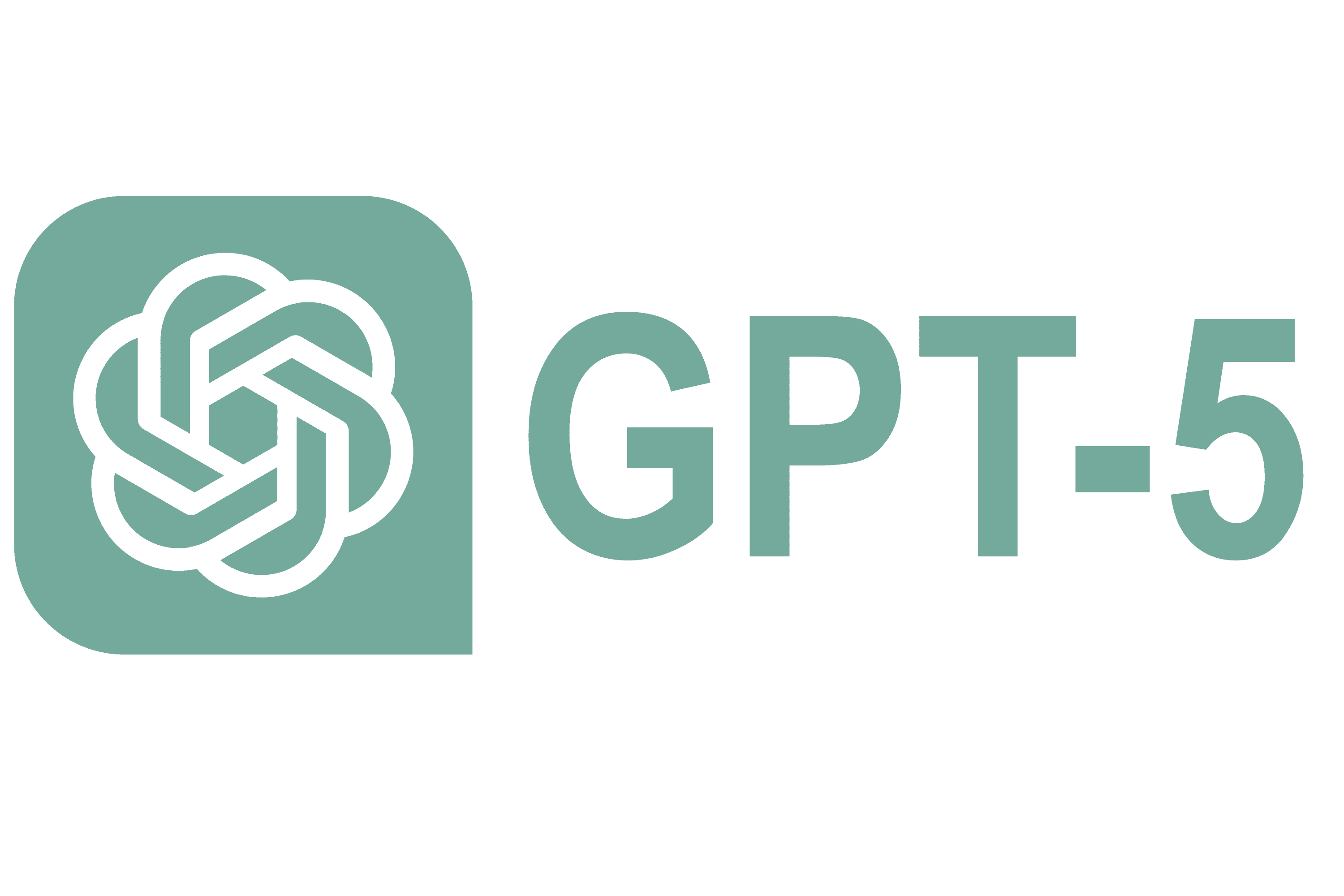After much anticipation, OpenAI has officially released ChatGPT 5 to the public in August 2025. This latest iteration of the popular AI language model powers ChatGPT, delivering remarkable improvements in speed, reasoning, and versatility. Available to all users—including free, Plus, Pro, and Team subscribers—ChatGPT 5 marks a significant leap forward in conversational AI technology.
What’s New in ChatGPT 5?
ChatGPT 5 integrates traditional language modeling with advanced reasoning capabilities, enabling it to function like an instant PhD-level expert on virtually any topic. According to OpenAI CEO Sam Altman, the update focuses on:
- Faster response times for smoother, more natural conversations.
- Enhanced reasoning that improves problem-solving and complex question answering.
- Broader general knowledge and up-to-date information.
- Improved contextual understanding for more coherent multi-turn dialogues.
- Higher usage limits for paid users, while still offering free access.
The release of ChatGPT 5 accelerates the race toward artificial general intelligence (AGI) by combining multiple model architectures into a unified system that excels across diverse tasks.
Availability and Access
ChatGPT 5 is available today to all users on the ChatGPT platform:
- Free users get immediate access with standard usage limits.
- Plus, Pro, and Team subscribers enjoy higher usage thresholds and priority access.
- The update is integrated directly into the ChatGPT interface—no additional downloads or installations are required.
This democratization of cutting-edge AI ensures that individuals, businesses, and developers can leverage GPT-5’s capabilities for a wide range of applications, from writing assistance and coding help to research and education.
A Brief History of ChatGPT Models
Since its initial release, ChatGPT has evolved through multiple generations, each bringing substantial improvements in language understanding, generation quality, and usability. Here is a concise overview of the progression:
| Model | Release Year | Key Features & Improvements |
|---|---|---|
| GPT-3 | 2020 | Large-scale transformer model; strong language generation; foundation for ChatGPT |
| ChatGPT (GPT-3.5) | 2022 | Fine-tuned for chat; improved conversational abilities; safer responses |
| GPT-4 | 2023 | Multimodal inputs; better reasoning; passed professional exams; more factual and creative |
| GPT-4 Turbo | 2024 | Faster, cheaper variant of GPT-4; widely used in ChatGPT Plus |
| GPT-5 | 2025 | Combines traditional and reasoning models; instant expert-level knowledge; faster and more capable |
What ChatGPT 5 Means for Users and Developers
The release of GPT-5 opens new possibilities:
- Enhanced productivity: More accurate and context-aware assistance for writing, coding, and problem-solving.
- Education: Instant access to expert-level explanations and tutoring across subjects.
- Business: Smarter customer support bots, content generation, and data analysis tools.
- Innovation: Developers can build more sophisticated AI-powered applications using GPT-5 APIs.
OpenAI’s continued commitment to safety and ethical AI use remains central, with ongoing efforts to mitigate biases and misinformation.
Conclusion
ChatGPT 5’s public release is a milestone in AI development, offering unprecedented conversational intelligence and accessibility. Whether you’re a casual user seeking smarter chat or a professional integrating AI into workflows, GPT-5 delivers powerful new capabilities that redefine what AI assistants can do.
Experience the future of AI today by exploring ChatGPT 5 on OpenAI’s platform.
For official details and updates, visit OpenAI’s announcement.
Key Takeaways
- ChatGPT-5 is out now
- The new model features improved internet browsing, visual processing, and more natural conversation abilities.
- OpenAI has confirmed GPT-5 as their next model, though technical limitations may influence the development timeline.
Exploring the Evolution of OpenAI’s ChatGPT Models
ChatGPT-5 is now available, according to OpenAI CEO Sam Altman. This new model has significant improvements over earlier versions. While there were initial reports that GPT-5 might not be ready until after 2025, recent updates show that development has sped up. The new version has better internet browsing, improved visual understanding, and more natural conversation skills.
OpenAI has confirmed that ChatGPT-5 is their next model but has been careful not to promise too much about what it can do. Some AI experts believe that while this release will be a big step forward, OpenAI might reach some technical limits that could slow down future developments after this version.
OpenAI’s ChatGPT has transformed rapidly since its initial release, with each model bringing significant improvements in capabilities, understanding, and user interaction. The journey from earlier versions to the anticipated GPT-5 shows OpenAI’s commitment to advancing AI technology.
From GPT-3 to GPT-4: Advancements and Limitations
GPT-3 marked OpenAI’s first major breakthrough in large language models accessible to the public. Released in 2020, it impressed users with its 175 billion parameters and ability to generate human-like text.
GPT-4, launched in March 2023, represented a massive leap forward. This multimodal model could process both text and images, showing improved reasoning and reduced hallucinations compared to its predecessor.
Key improvements in GPT-4 included:
- Enhanced problem-solving abilities
- Better context understanding
- More accurate responses to complex queries
- Improved safety measures
Despite these advances, GPT-4 still had limitations in real-time information access, occasional factual errors, and sometimes struggled with nuanced reasoning tasks.
GPT-4.5 and ChatGPT-4o: Stepping Stones to GPT-5
Between GPT-4 and the anticipated GPT-5, OpenAI released intermediate updates that significantly enhanced the model’s capabilities. ChatGPT-4o, introduced in 2024, brought major improvements in speed and responsiveness.
These interim models focused on:
- Faster processing times with reduced latency
- Better multimodal integration across text, image, and audio
- Enhanced real-time capabilities for more dynamic interactions
These models served as important testing grounds for features that would likely appear in GPT-5. They allowed OpenAI to refine their approach to natural language processing while gathering valuable user feedback.
The improvements demonstrated OpenAI’s iterative development strategy, with each release building on previous versions while addressing known limitations.
Previewing ChatGPT-5: Potential Features and Capabilities
According to recent statements from OpenAI CEO Sam Altman in February 2025, GPT-5 is coming “in months, not weeks.” This next-generation AI model is expected to push boundaries even further.
Industry experts anticipate GPT-5 will feature:
- Dramatically improved reasoning abilities
- Enhanced multimodal capabilities beyond text and images
- Better long-context understanding
- More nuanced comprehension of human intent
- Reduced hallucinations and improved factual accuracy
The model will likely require less prompting and guidance from users, understanding implied requests more naturally. OpenAI may also introduce new customization options, allowing users to tailor the AI’s approach to their specific needs.
While specific technical details remain under wraps, GPT-5 represents the culmination of years of research and development in AI technology.
Anticipated Impact of ChatGPT-5 on Various Domains
ChatGPT-5 is expected to revolutionize how we interact with AI systems. The upcoming model will likely bring significant advancements that extend beyond simple text generation to more nuanced understanding and problem-solving capabilities.
Business and Commerce: Enhanced AI-driven Solutions
ChatGPT-5 will likely transform business operations through more sophisticated AI integration. Companies using the new model may see improved customer service capabilities, with AI agents that understand complex requests and handle multiple steps without human intervention.
Sam Altman’s hints about ChatGPT-5 suggest it will offer enhanced reasoning abilities compared to GPT-4o. This could enable more accurate financial analyses and better data-driven decision making for organizations of all sizes.
Microsoft, a key OpenAI partner, is expected to integrate ChatGPT-5 capabilities into its business products. This would allow companies to automate complex workflows that currently require human oversight.
The new model may also introduce specialized business agents that can manage entire processes from start to finish. These AI assistants could potentially reduce operational costs while improving efficiency.
Education and Research: Facilitating Deeper Insights
ChatGPT-5 is poised to transform educational environments with more accurate information delivery. Students may benefit from AI tutors that adapt to individual learning styles and provide personalized guidance.
Researchers could leverage ChatGPT-5’s improved “deep research” capabilities to analyze complex academic literature. The model’s enhanced understanding of scientific concepts might help accelerate discoveries in fields like medicine and climate science.
Universities may incorporate ChatGPT-5 into their curriculum development processes. The AI could analyze learning outcomes and suggest improvements to educational content.
The standard intelligence setting in ChatGPT-5 will likely surpass current models in its ability to explain complex concepts in simple terms. This could make advanced topics more accessible to students at all levels.
User Experience: Interaction with Multimodal AI Chatbots
ChatGPT-5 will likely feature enhanced multimodal capabilities building on GPT-4o’s foundation. Users might interact with the AI through combinations of text, images, audio, and potentially video inputs.
The subscription model for ChatGPT-5 might offer tiered access to different capabilities. Power users could gain access to “Orion” – the rumored internal codename for advanced features within the new model.
Everyday interactions with the AI chatbot will become more natural and contextually aware. The system might better remember previous conversations and maintain coherence across extended dialogues.
User interfaces will likely evolve to accommodate ChatGPT-5’s expanded capabilities. New interactive elements could make complex tasks like coding, design work, and content creation more intuitive when working with AI assistance.
Frequently Asked Questions
As ChatGPT 5 approaches its potential release, many questions have emerged about its capabilities, launch timeline, and improvements over existing models. The information available points to significant advancements in both technology and functionality.
When is the expected launch date for the latest version of ChatGPT?
Based on current information, ChatGPT 5 is anticipated to launch between late 2024 and early 2025. This timeline aligns with OpenAI’s previous release patterns and development schedule.
OpenAI has not officially confirmed a specific date, but industry experts point to 2025 as the most likely release window. Sam Altman, OpenAI’s CEO, has discussed the upcoming version with Bill Gates, suggesting active development is well underway.
Some platform features have already been updated with a February 28, 2025 notation, potentially indicating preparation for the new model’s integration.
What enhancements will be introduced in the upcoming ChatGPT iteration?
ChatGPT 5 is expected to feature significantly improved reasoning capabilities and more sophisticated understanding of context. The model will likely demonstrate enhanced problem-solving skills across complex domains.
Users can anticipate better handling of nuanced instructions and more consistent accuracy in responses. Technical improvements may include reduced hallucinations and more reliable information processing.
The new version might also incorporate improved multimodal capabilities, allowing better integration of text, images, and potentially other data types in a single interaction.
How does the new version of ChatGPT compare to its predecessor?
ChatGPT 5 will likely demonstrate substantial improvements in reasoning depth and contextual understanding compared to ChatGPT 4. The enhancements are expected to reduce limitations that users currently experience.
Response quality should show marked improvement, particularly for complex queries requiring multi-step reasoning. The system will likely maintain conversations with greater coherence across extended exchanges.
Processing speed may also see improvements, with the search results mentioning “faster streaming of conversations” as a recent update to the platform.
What is the pricing structure for the new ChatGPT model?
OpenAI has not officially announced pricing for ChatGPT 5. The company typically offers tiered access, with both free and premium subscription options.
The current ChatGPT Plus subscription costs $20 per month, and analysts expect similar pricing for basic access to ChatGPT 5. Enterprise pricing will likely follow a separate structure based on usage volume and specific features.
OpenAI may introduce new subscription tiers to accommodate different user needs and access levels to the advanced capabilities of the new model.
How many parameters will the new ChatGPT model contain?
The exact parameter count for ChatGPT 5 remains unconfirmed by OpenAI. Industry speculation suggests it could significantly exceed the estimated 1.76 trillion parameters of GPT-4.
Parameter count alone doesn’t determine performance, but the increase would support more sophisticated reasoning and knowledge representation. OpenAI has been focusing on efficiency alongside raw scale.
Some AI researchers believe OpenAI may have encountered computational limits, which could affect the final parameter count of the model.
What is the status of the development for the next generation of ChatGPT?
Development of ChatGPT 5 appears to be in advanced stages based on discussions between OpenAI executives and industry figures. Sam Altman’s conversations with Bill Gates suggest significant progress.
OpenAI may be addressing technical challenges that some researchers have described as “hitting some sort of wall” in AI development. This could explain why the release is projected for 2025 rather than earlier.
Recent platform updates dated February 28, 2025, indicate that backend preparations may already be underway to support the new model’s eventual deployment.







